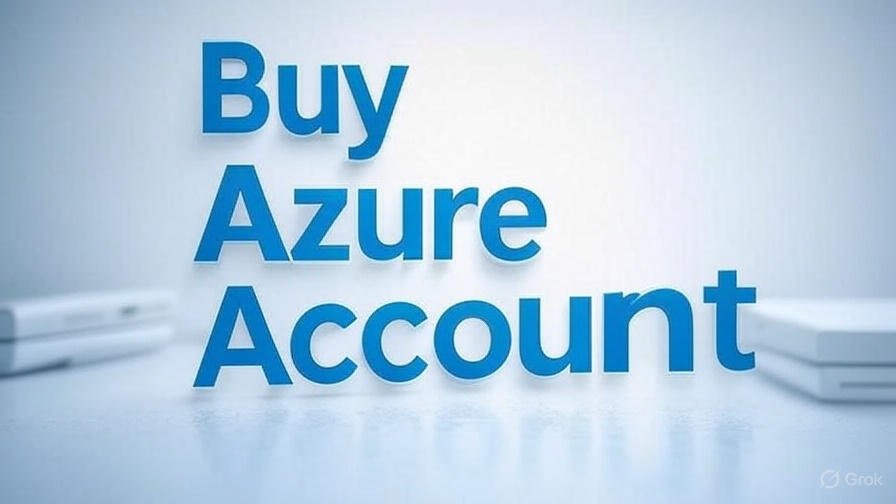In the fast-paced world of cloud computing, Microsoft Azure continues to lead with innovative updates throughout 2025, empowering businesses to achieve unparalleled efficiency. As organizations increasingly decide to buy Azure account to leverage its scalable infrastructure, the real challenge lies in post-purchase optimization. Recent announcements from Microsoft Build 2025 and monthly Cost Management updates highlight tools for curbing expenses, streamlining resources, and integrating AI for smarter operations. This in-depth news article, drawing from official Microsoft sources and industry experts, provides actionable strategies to ensure your Azure investment delivers maximum value amid projections of cloud spending surpassing $1.5 trillion globally by year-end. 0 20 For deeper insights into Azure’s latest features, visit Microsoft Azure’s official blog.With Azure’s February, April, and May 2025 updates introducing AI-enhanced forecasting, expanded savings plans, and anomaly detection, users can now proactively manage costs while boosting sustainability. Whether you’re a growing startup or a Fortune 500 enterprise navigating hybrid environments, these expert-backed tips—rooted in the latest FinOps practices—will help you optimize your setup for long-term success. 1 31
Advanced Cost Management: Harnessing 2025 Updates to Slash Expenses
Cost overruns remain a top concern for Azure users, but Microsoft’s 2025 enhancements are changing the game. After you buy Azure account, dive into Microsoft Cost Management, now featuring Copilot nudges and new fields for enterprise agreement (EA) customers to refine allocation. 1 This suite of FinOps tools enables real-time analysis, helping identify spending patterns and prevent inefficiencies. 6
A cornerstone strategy is adopting Azure Savings Plans for Compute, offering up to 65% discounts on dynamic workloads without fixed commitments. 20 In April 2025, Microsoft expanded these to more AI services, allowing seamless savings across virtual machines, containers, and databases. 31 Complement this with rightsizing resources: Azure Advisor, bolstered by machine learning in May 2025 updates, recommends optimal VM sizes based on usage data, potentially cutting costs by 20-40%. 0 22
For variable workloads, Spot VMs provide up to 90% savings, ideal for fault-tolerant tasks like batch processing. 21 Set up budgets and alerts with AI-powered anomaly detection to flag unusual spikes early— a feature rolled out in February 2025 that integrates with Teams for instant notifications. 1 Industry reports from Finout indicate organizations using these tools achieve average savings of 35%, with even higher returns when combining native Azure features with third-party solutions like Ternary or Economize.
Implement resource tagging rigorously: Label by department, project, or environment for granular reporting and chargeback models. 8 Automate shutdowns for non-production environments using Azure Automation, now with enhanced sustainability metrics tying cost reductions to carbon footprint improvements. 24 A 2025 FinOps X study emphasizes data quality enhancements, like smart views for Azure OpenAI costs, enabling precise optimization in AI-driven setups. 3
Cost Optimization Tools Comparison
| Tool | Key Features | Savings Potential | Best For |
|---|---|---|---|
| Azure Cost Management | Analysis, budgets, alerts, Copilot integration | Up to 35% | Daily monitoring |
| Azure Advisor | Rightsizing recommendations, ML-based insights | 20-40% | Resource tuning |
| Savings Plans | Flexible compute discounts | Up to 65% | Long-term commitments |
| Spot VMs | Discounted interruptible instances | Up to 90% | Non-critical workloads |
| Ternary/Economize | Multi-cloud visibility, automation | 30-50% | Enterprise FinOps |
Source: Compiled from Microsoft and industry reports, 2025. 26 32
Strategic Resource Allocation: Leveraging Azure’s Governance for Efficiency
Effective resource allocation is pivotal, and Azure’s Well-Architected Framework—refreshed in 2025—guides users through five pillars, including cost optimization and performance efficiency. 41 Organize with subscriptions and resource groups, grouping by lifecycle for streamlined deployments and deletions.
Enforce standards via Azure Policy, restricting regions or sizes to align with compliance and budgets. 33 Autoscaling in Virtual Machine Scale Sets, enhanced with AI predictions in 2025, dynamically adjusts to demand, preventing overprovisioning. For storage, use intelligent tiering in Azure Blob to shift data to cost-effective layers automatically.
Hybrid users benefit from Azure Arc, now supporting advanced AI workloads with improved quota management. 14 Role-based access control (RBAC) via Azure AD ensures secure allocation, while Resource Graph queries provide quick insights. Businesses adopting these practices report 40% better utilization, per 2025 benchmarks. Learn more about resource management best practices at Microsoft’s Well-Architected Framework documentation.
Integrating AI Tools: 2025 Innovations for Intelligent Optimization
Azure’s AI ecosystem exploded in 2025, with GPT-5 models in Azure OpenAI and AI Foundry enabling agentic workflows for automation. 15 Use Azure Machine Learning for predictive analytics on resource needs, integrating with Cost Management for automated insights.
Copilot in Azure extends to natural language queries for cost optimization, transforming queries into actionable recommendations. 2 For AI workloads, optimize token usage in OpenAI services to balance performance and costs, as per Finout’s guide. 28 Azure AI Search’s agentic retrieval, announced at Build 2025, boosts query relevance by 40%, aiding faster decision-making.
LogicMonitor’s AI-powered recommendations and ProsperOps’ strategies highlight up to 50% productivity gains through automated scaling and forecasting. 23 38 With over 1,000 customer stories showcasing AI transformations, 2025 is the year to embed these tools for holistic optimization. 12
Conclusion: Future-Proof Your Azure Investment Today
As Azure evolves with monthly updates and AI integrations, maximizing your account post-purchase demands ongoing vigilance. 4 By implementing these strategies—from cost tools to AI-driven efficiencies—you’ll not only reduce expenses but also enhance performance and sustainability. Stay informed via Azure’s blog and tools for continued excellence in 2025 and beyond.
